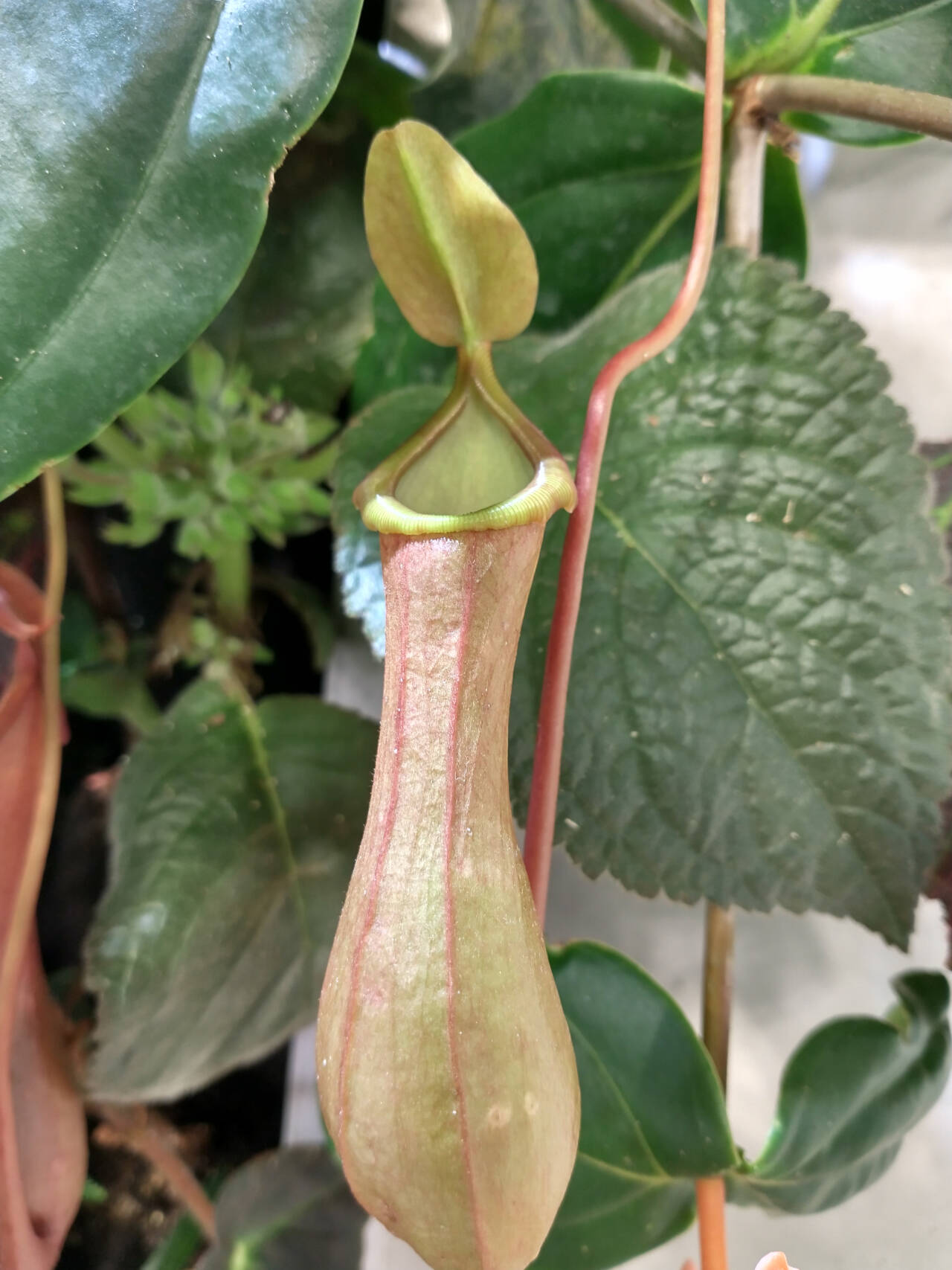Question: I bought a carnivorous plant at a hardware/gardening store several months ago. I am growing it in the house and there are not many bugs around. Should I feed it hamburger? Do you think it would benefit from a fertilizer?
Answer: The short answer is no and no. Do not feed your carnivorous plant hamburger. Do not fertilize the soil. You will kill it. Now for the longer answer.
To grow a carnivorous plant successfully, it’s best to replicate the conditions found in its natural habitat. In the wild, carnivorous plants are usually found in sites that are humid and wet with nutrient-poor soils such as bogs, swamps, and sandy or rocky areas.
Because carnivorous plants can’t obtain nutrients from the soil, they turn to another source: protein-packed insects and other small invertebrates.
To capture their prey, they have developed specialized leaf structures (traps) such as fluid-filled pitchers (see photo), adhesive “flypaper” leaves and hinged lobes that snap shut when prey encounter them.
Carnivorous plant care
You don’t say what kind of carnivorous plant you have, but some generalizations can be made about their care. Please research your plant’s species to see if it has special needs.
Carnivorous plants photosynthesize like all plants and need light to produce carbohydrates from carbon dioxide and water. Unlike many plants, however, carnivorous plants require a great deal of light (14 to 16 hours a day) to thrive. Some can handle direct sunlight, but others need to be grown in diffuse, bright light.
If you are growing your carnivorous plant indoors, windowsill light is unlikely to be sufficient. You will need to provide supplemental lighting. LED lights are best and should be placed 12 to 18 inches above the plants. Look for LED lights that are tuned to provide wavelengths for plants (i.e., primarily deep blues and deep reds).
The root systems of most carnivorous plants have not evolved to absorb nutrients and can be damaged by even small amounts of nutrients, salts and minerals. This characteristic impacts the desirable growing medium, watering schedule and fertilizing practices.
Do not plant carnivorous plants in commercial potting soil which often contains fertilizer. Fertilizer in the soil will burn the roots of a carnivorous plant and quickly kill it.
Plant carnivorous plants in a combination of peat and sand; the proportion depends on the species and its need for better drainage. Coir is an acceptable substitute for peat; perlite is sometimes used instead of sand.
Do not apply fertilizer to the medium in which you grow your carnivorous plant.
Never water carnivorous plants with tap water which contains salts and minerals. Avoid bottled water, too, because it usually contains minerals. Use distilled, de-ionized or rainwater.
To increase the humidity around your plant, place it on a tray of pebbles that is kept permanently wet. Do not let the water touch the bottom of the pot; it could contain dissolved minerals from the rock and, if absorbed through drainage holes, damage the plant’s roots.
If you have several carnivorous plants, consider growing them in a terrarium. Cover the top of the terrarium with a sheet of clear acrylic plastic (for example Plexiglass) to keep the humidity high; leave the cover slightly ajar to provide ventilation.
What about feeding your carnivorous plant?
Carnivorous plant enthusiast Barry Rice puts it bluntly: “[You should worry] about the light, humidity, and water your plant is getting. Only once you have those things addressed and your plant is growing really well should you concern yourself with feeding it.”
Although carnivorous plants get essential nutrients from insects, they do not need to feed every day. In fact, some carnivorous plants need only two or three feedings a year.
When grown outdoors (during the summer) the plant will likely attract and capture sufficient insects on its own. If grown indoors, insects might be less available and can be fed to the plant by hand. Small, live insects are the best option.
But you can also feed carnivorous plants dried insects like meal worms or fish food. If necessary, chop up the dried food and hydrate it with a drop of distilled water before placing it in the trap.
Carnivorous plants are generally unable to digest non-insect food items. Bits of hamburger, for example, will simply rot, and cause the trap, or even the whole plant, to die. So don’t do it!
Jeanette Stehr-Green is a WSU-certified Clallam County Master Gardener.


